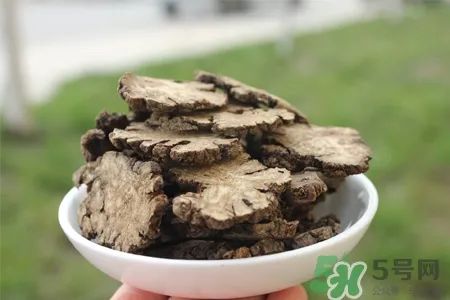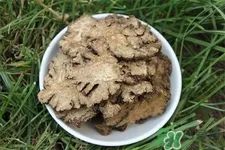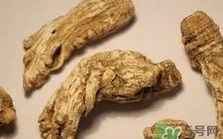Chuanxiong (Ligusticum chuanxiong) is a traditional Chinese medicine that can dispel wind and dampness, invigorate blood circulation, stop bleeding, and treat headaches. Many people are confused about the specific efficacy and functions of Chuanxiong. This article discusses the nutritional value of Chuanxiong and its various effects.
Nutritional Value of Chuanxiong
Chuanxiong has a pungent taste and a warm nature; it enters the liver (Gan), gallbladder (Dan), and heart (Xin) meridians. It has a fragrant aroma that rises and disperses, and it possesses the functions of invigorating blood circulation and qi (气) movement, as well as dispelling wind and alleviating pain. It is primarily used for conditions such as irregular menstruation, dysmenorrhea, amenorrhea, difficult labor, retained placenta, postpartum abdominal pain, lumps, chest and rib pain, traumatic injuries, headaches, dizziness, and numbness of the limbs, as well as furuncles and ulcers.
Chuanxiong is the rhizome of the perennial herbaceous plant of the Umbelliferae family. It is mainly cultivated in Sichuan Province, with other regions such as Shaanxi, Gansu, Jiangsu, Zhejiang, Jiangxi, Hubei, Hunan, Guangxi, Guizhou, and Yunnan also cultivating it. The rhizomes are harvested in late May to early June of the second year after planting, cleaned of soil, and dried.
The rhizome of Chuanxiong is irregularly nodular and bulbous, with a diameter of 1.5 to 7 cm. The surface is yellow-brown to yellow-brown, with many parallel raised nodes; the top has a round depression where the stem was attached, and the underside and nodes have many small tuberous root scars. It is firm and not easily broken, with a cross-section that is yellow-white or gray-yellow, featuring wavy ring patterns and scattered yellow-brown oil spots. It has a strong and distinctive aroma, with a bitter, pungent taste and a slight sweetness that causes a tingling sensation on the tongue. The best quality is characterized by large, plump pieces, firm texture, yellow-white cross-section, high oil content, and strong aroma.

Efficacy and Functions of Chuanxiong
1. Invigorating Blood and Moving Qi:
① Used for angina pectoris due to coronary heart disease, characterized by chest tightness and pain in the precordial area, it can be combined with Honghua (Carthamus tinctorius), Danshen (Salvia miltiorrhiza), Xiangfu (Aquilaria sinensis), and Chishaoshu (Paeonia lactiflora) in the Coronary Heart Disease No. 2 formula.
② Used for diseases caused by qi and blood stagnation, such as early menstruation with heavy red flow, indicating blood heat, it can be combined with Shengdi (Rehmannia glutinosa), Mudanfeng (Paeonia suffruticosa), and Danggui (Angelica sinensis); for late menstruation occurring once every 1-2 months, with abdominal pain and excessive white discharge during menstruation, it can be combined with Danggui, Paoginger (Zingiber officinale), Duzhong (Eucommia ulmoides), and Rougui (Cinnamomum cassia).
③ Used for dysmenorrhea, if there is severe abdominal pain before menstruation and menstruation occurs one day later, it can be combined with Danggui, Tao Ren (Prunus persica), and Honghua; if there is amenorrhea without discomfort, it can be combined with Danggui, Tao Ren, Ganjing (Zingiber officinale), and Rougui; if there is postpartum abdominal pain, it can be combined with Danggui and Paoginger.
④ Used for traumatic injuries and localized swelling and pain, it can be combined with Zhi Zi (Gardenia jasminoides), Tao Ren, and Honghua.

2. Dispelling Wind and Alleviating Pain:
① Used for headaches due to colds, if it is due to wind-cold, it can be combined with Jingjie (Schizonepeta tenuifolia), Fangfeng (Saposhnikovia divaricata), and Bai Zhi (Angelica dahurica); if it is due to wind-heat, it can be combined with Chrysanthemum (Chrysanthemum morifolium) and Peppermint (Mentha haplocalyx).
② Used for wind-damp bi syndrome, it can be combined with Qianghuo (Notopterygium incisum), Du Huo (Angelica pubescens), and Fangfeng.
3. Promoting Qi and Relieving Stagnation:
① Used for cholecystitis with upper abdominal and rib pain, it can be combined with Chaihu (Bupleurum chinense) and Huangqin (Scutellaria baicalensis).
② Used for gastritis with upper abdominal bloating, acid reflux, and heartburn, it can be combined with Dandelion (Taraxacum mongolicum) and Muxiang (Aucklandia lappa).

Side Effects and Contraindications of Chuanxiong
1. Chuanxiong should not be consumed with Huanglian (Coptis chinensis), Huangqi (Astragalus membranaceus), Shanzhuyu (Cornus officinalis), Langdu (Cynanchum atratum), or with nitre and talc, and should not be used with Fanglilu (Veratrum nigrum). Overuse may lead to symptoms such as vomiting and dizziness.
2. It is contraindicated for individuals with yin deficiency and excess fire, qi rising with phlegm and wheezing, and those with upper excess and lower deficiency, as well as those with weak qi. Caution is advised for women with excessive menstruation, bleeding disorders, and during pregnancy.
3. Individuals with symptoms of excess heat, spleen deficiency with poor appetite, heat-induced headaches, vomiting, coughing, night sweats, dry throat, fever, thirst, and irritability should avoid consumption, as it may cause serious side effects.

Methods of Consuming Chuanxiong
1. Chuanxiong Duck:
Prepare the following ingredients: Chuanxiong, duck meat, shredded ginger, salt, and vegetable oil in appropriate amounts. Clean the duck meat and cut it into pieces. Heat oil in a pot, sauté the ginger until fragrant, then add the duck pieces and stir-fry briefly. Add an appropriate amount of water and Chuanxiong, and simmer on low heat for 1 hour, finally seasoning with salt. This dish promotes blood circulation and qi movement, and dispels stasis.
2. Chuanxiong with Snails:
Prepare Chuanxiong, snails, ginger slices, scallions, a tablespoon of cooking wine, a teaspoon of salt, appropriate amounts of monosodium glutamate, and a small amount of sesame oil. Soak Chuanxiong until soft and slice it. Remove the shells and intestines from the snails, wash them, and slice them. Combine Chuanxiong, snails, scallions, ginger, cooking wine, salt, monosodium glutamate, and sesame oil in a pot, add an appropriate amount of water, bring to a boil, and then simmer for about 20 minutes until cooked. This dish has the effect of promoting blood circulation and qi movement.
3. Decoction and Tea:
Generally, a combination of Chuanxiong, Danggui, Bai Shao (Paeonia lactiflora), and Shudi (Rehmannia glutinosa) is used for decoction, which has the effect of nourishing blood and regulating menstruation. It can also be made into tea by using 3 grams each of Chuanxiong, green tea leaves, and Hangbai Ju (Chrysanthemum morifolium), steeped in boiling water, which can assist in treating wind-heat headaches. Additionally, Chuanxiong can be ground into powder and soaked in wine for better effects on migraines.
4. Chuanxiong Soup:
This is primarily made with Chuanxiong, Danshen, and eggs. Boil Chuanxiong, Danshen, and eggs in water, and after the eggs are cooked, shell them and boil for a little longer. Drinking the soup and eating the eggs is more effective. The main function is to help nourish the liver and benefit the kidneys.

